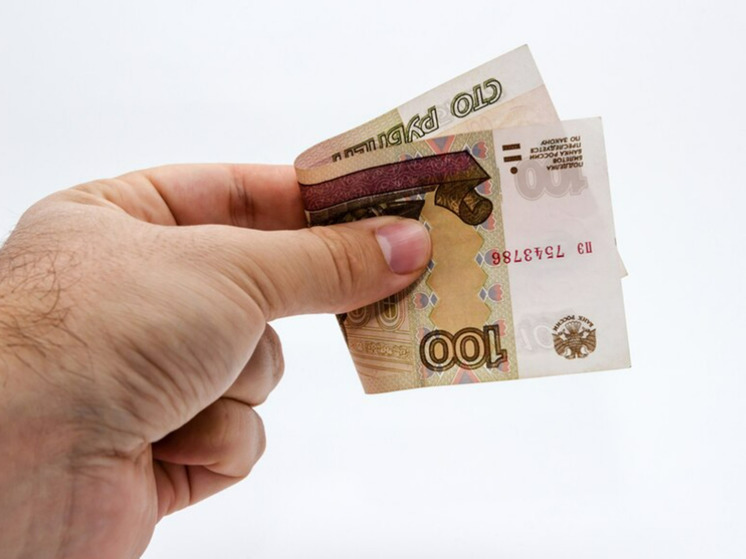Analyst Razuvaev explained why the dollar could fall in price to 80 rubles
Since June 13, due to the fact that the Moscow Exchange and its structures fell under US blocking sanctions, exchange trading in the dollar and euro was stopped . This event, naturally, excited the financial sector and raised purely consumer questions: how the official ruble exchange rate will be determined in the new conditions and what it will actually be. It turned out that even under pressure, the national currency can surprise everyone. Why, a week after the introduction of sanctions, the ruble strengthened noticeably, experts explained to MK.

After the cessation of exchange trading in the US dollar, euro and Hong Kong dollar, the official exchange rate of these currencies is determined using a new methodology — based on data from banking transactions with currencies and information from over-the-counter digital platforms. If previously the current exchange rate of these currencies could be found on the Moscow Exchange, now it is available only on the website of the Bank of Russia, which publishes updated quotes once a day. On weekdays, the regulator collects data until 15:30 Moscow time of the current day, and around five o’clock in the afternoon it issues information about the official exchange rate of the dollar and euro for the next day.
The official rate is needed because it is used for mandatory calculations of taxes, duties in legal proceedings or for statistics. At the same time, private and public companies and citizens are not obliged to enter into transactions only at the official rate. This partly explained the big difference between the purchase and sale of dollars and euros in Russian banks immediately after the introduction of US sanctions against the Moscow Exchange and its structures. Let us recall that by the evening of June 13, the difference in the buying and selling rates of foreign currency was on average about 10 rubles in exchange offices among the largest and most popular banks among the population, the maximum difference reached 26 rubles. Even in the morning of the same day, in one of the large banks, dollars were sold to their clients for 140 rubles, and when sold by citizens, they purchased them for 40 rubles. However, by June 19, this difference in banks began to decrease. “The shock passed, the panic mood “evaporated”, the rush demand for cash currency ceased. Accordingly, its selling price has decreased,” explained Maxim Osadchiy, head of the analytical department of BKF Bank.
Contrary to the expectations of skeptics, after the introduction of US sanctions, the ruble not only did not collapse, but strengthened significantly. Let us recall that on June 11, according to the results of the last trades on the Moscow Exchange, the dollar was 89.1 rubles, the euro — 95.6 rubles, and the yuan — 12.2 rubles. And on June 19, the US dollar fell during the session to a multi-month minimum at 82.48 rubles, but later stabilized at about 84.36 rubles.
Experts disagreed about the reasons for this strengthening of the national currency. Some argue that this is due to the lack of “contribution from speculators” who previously influenced official trading. “With the cessation of trading in the dollar and euro on the Moscow Exchange, the ruble can be congratulated on the significant reduction in pressure from speculators who have been trading the ruble for decades,” says BitRiver communications director and economist Andrei Loboda.
However, due to the small number of participants in foreign exchange transactions, the segment has become very volatile: the amplitude of exchange rate fluctuations throughout the day has become much wider. “The euro paired with the ruble fell to 88.57 rubles and later recovered to 90.55 rubles. The last time the euro currency was this cheap was June 23, 2023. The Chinese yuan is also retreating under the pressure of the ruble, sagging to 11.24 rubles,” Vladislav Silaev, a senior trader at Alfa Capital Management Company, gave an example. Such dynamics arise both from infrastructure risks and in connection with the tax period in Russia and, in general, with an oversupply of yuan on the site, the expert claims.
However, it is too early to rejoice at the strengthening of the ruble. According to Alexander Razuvaev, a member of the supervisory board of the Guild of Financial Analysts and Risk Managers, the reasons for the strengthening of the ruble are not at all funny. It has become much more difficult to make payments for cross-border transactions, especially for importers. There may be interruptions in the supply of equipment, wine and, most painfully, pharmaceutical products. A very likely increase in the key rate of the Central Bank of the Russian Federation at a meeting in July from 16% to 17-18% also plays on the side of the ruble. Investments in Russian debt securities and deposits will become even more profitable for foreigners: 18-20% per annum in rubles versus 5-6% in euros or dollars. Taking into account the emerging imbalances in the market, American currency purchased at the current exchange rate may fall in price in rubles by another 10-15%. Russians may see the dollar significantly less than 80 rubles. The strengthening of the ruble will deal a severe blow to the revenue side of the federal budget and increase its deficit. The current situation will push the authorities to develop the digital ruble, Islamic banking and industrial mining, Razuvaev is sure.


